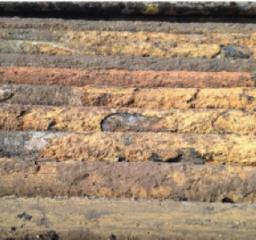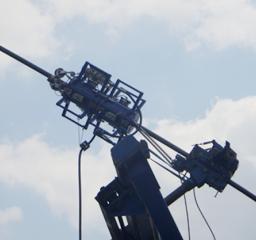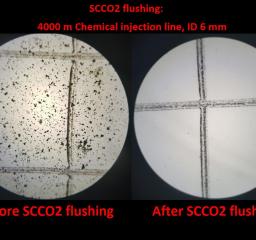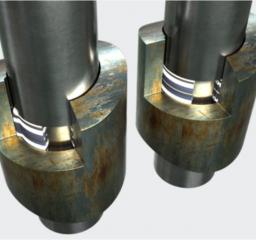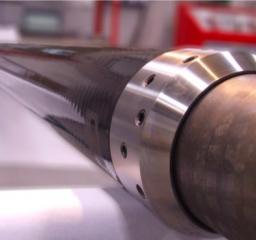ThinJack Service
Separating Seized Well Flanges
"Tree wellhead repairs" is an upstream operating companies' "key theme". So, do you need to remove bolted flanges, valve covers (bonnets), hub clamps and bolt less hub flanges on wellheads, which present real challenges in separating?
ThinJack is a unique service to separate seized well flanges where conventional techniques either do not work or are unsuitable. As well as separating the flange, the ThinJack's hydraulic power draws seized and rusty studs through the bolt holes and overcomes seal friction. It delivers hundreds of tons of controlled force, exactly where it is needed, which is significantly higher than from conventional hydraulic spreaders or the pulling-power of drill strings. ThinJack's hydraulic power can separate in any direction whilst protecting sealing faces and hanger necks. It is possible to jack within gaps an order of magnitude thinner than needed for any other system. With controlled and even flange separation, the likelihood that flange studs become tilted and jammed inside the bolt holes is minimised. ThinJack's hydraulic power is an intrinsically safe alternative to cutting and grinding tools. Human "power", improvised tools and methods "forced beyond their safe limits" are eliminated. ThinJack provides a rigless and crane less service, though some of our work is enhancing the pulling limitations of draw works, drill strings and their connections.
| Specification Title | Specification Description |
|---|---|
|
Areas of Application
|
Wellhead flange separation where ThinJack specialists can create a gap for insertion of "ThinJacks".
|
|
ATEX certified
|
94/9/EC. The ATEX Directve on equipment and protection systems intended for use in potentially explosive atmospheres. ThinJackGAP: Atex Zone 0 for sensors near well. Interactive display: ATEX Zone 2.
|
|
Implementation time
|
Typical time for separation: 2 to 24 hours, depending on binding forces of flange.
|
|
Certifications
|
Documented in accordance with 98/37/EC. The Machinery Directive.
|
|
Applicability
|
As with any jacking system or service the following may significantly reduce the effectiveness of the service: 1. "Crumbly" services to jack against. 2. Separation of flanges where bolts or studs are bent during flange make up or subsequently.
|
|
Capabilities
|
Initial gap needed: 2.5 mm though thicknesses down to 1mm can be made to order. Force available: Up to 2.5 tonnes for each square cm of ThinJack area. (May not be achievable depending on shape and construction.)
|
|
Services
|
The system is operated as a service by ThinJack Ltd only.
|
|
Sizes
|
Usually, to fit between the bolt holes and the flange circumference.
|
Reviews
Sign up or log in to your explorer or platform subscription to get access to the reviews written about this technology.
The Technology Readiness Level (TRL) indicates the maturity level of novel technologies. Learn more about the TRL scale used by us.
[9/9]
Relative Business Impact

Sign up or log in to your explorer or higher plan to get access to all the 8 deployment references.
Last Deployment Year


